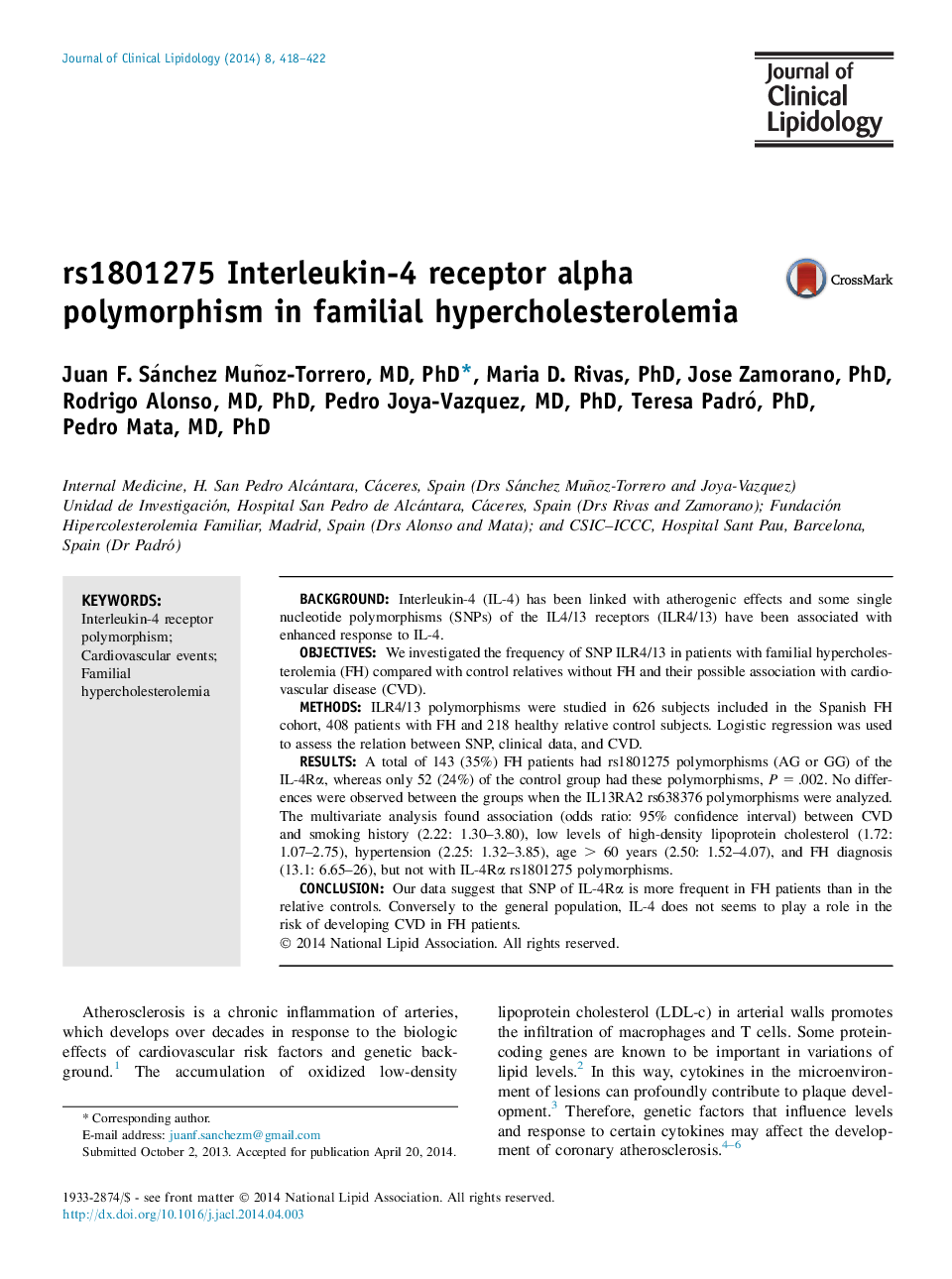| Article ID | Journal | Published Year | Pages | File Type |
|---|---|---|---|---|
| 5986041 | Journal of Clinical Lipidology | 2014 | 5 Pages |
âºSNP of the IL-4Rα is more frequent in FH patients than in the relative controls.âºIL-4 does not seem to play a role in the risk of developing CVD in FH patients.
BackgroundInterleukin-4 (IL-4) has been linked with atherogenic effects and some single nucleotide polymorphisms (SNPs) of the IL4/13 receptors (ILR4/13) have been associated with enhanced response to IL-4.ObjectivesWe investigated the frequency of SNP ILR4/13 in patients with familial hypercholesterolemia (FH) compared with control relatives without FH and their possible association with cardiovascular disease (CVD).MethodsILR4/13 polymorphisms were studied in 626 subjects included in the Spanish FH cohort, 408 patients with FH and 218 healthy relative control subjects. Logistic regression was used to assess the relation between SNP, clinical data, and CVD.ResultsA total of 143 (35%) FH patients had rs1801275 polymorphisms (AG or GG) of the IL-4Rα, whereas only 52 (24%) of the control group had these polymorphisms, P = .002. No differences were observed between the groups when the IL13RA2 rs638376 polymorphisms were analyzed. The multivariate analysis found association (odds ratio: 95% confidence interval) between CVD and smoking history (2.22: 1.30-3.80), low levels of high-density lipoprotein cholesterol (1.72: 1.07-2.75), hypertension (2.25: 1.32-3.85), age > 60 years (2.50: 1.52-4.07), and FH diagnosis (13.1: 6.65-26), but not with IL-4Rα rs1801275 polymorphisms.ConclusionOur data suggest that SNP of IL-4Rα is more frequent in FH patients than in the relative controls. Conversely to the general population, IL-4 does not seems to play a role in the risk of developing CVD in FH patients.
